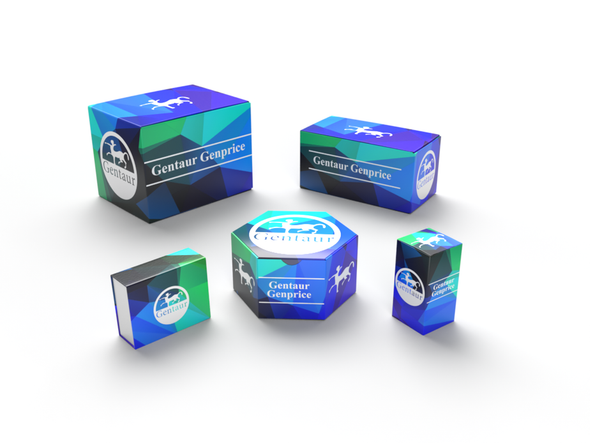Description
Thyroid Hormone Receptor Antibody [2103] | 50-170 | Gentaur UK, US & Europe Distribution
Host: Mouse
Reactivity: Human, Mouse, Rat, Dog
Homology: N/A
Immunogen: Peptide corresponding to amino acid residues from the N-terminal region of human thyroid hormone receptor, a1/a2-isotype.
Research Area: Other
Tested Application: WB
Application: The antibody has been directly tested for reactivity in Western blots with human tissue. It is anticipated that the antibody will react with canine, mouse and rat based on the fact that these species have 100% homology with the amino acid sequence used as antigen.
Specificiy: N/A
Positive Control 1: N/A
Positive Control 2: N/A
Positive Control 3: N/A
Positive Control 4: N/A
Positive Control 5: N/A
Positive Control 6: N/A
Molecular Weight: 50/58
Validation: N/A
Isoform: N/A
Purification: Protein G purified
Clonality: Monoclonal
Clone: 2103
Isotype: IgG1
Conjugate: Unconjugated
Physical State: Liquid
Buffer: N/A
Concentration: N/A
Storage Condition: Thyroid Hormone Receptor antibody can be stored at -20˚C and is stable at -20˚C for at least 1 year.
Alternate Name: N/A
User Note: Optimal dilutions for each application to be determined by the researcher.
BACKGROUND: Thyroid hormones are essential for development of the central nervous system and deficits in these hormones during development affects such cognitive functions as learning and memory (Ambrogini et al., 2005; Chan and Kilby, 2000) . Thyroid hormones exert their physiological role mainly through binding to specific nuclear receptors including the predominant isoforms of thyroid hormone receptors TRalpha1, TRalpha2, TRbeta1 and TRbeta2. TRalpha1, TRbeta1 and TRbeta2 bind T3 with high affinity and also bind to thyroid hormone response elements (TREs) on chromatin to regulate the transcriptional processes in several target tissues, including adult rat brain (Constantinou et al., 2005) .

![Thyroid Hormone Receptor Antibody [2103] Thyroid Hormone Receptor Antibody [2103]](https://cdn11.bigcommerce.com/s-1rdwiq712m/images/stencil/608x608/products/461568/467397/gentaur-genprice__26005.1661610467__29809.1661628092__75433.1661676199__77988.1661684280__64362.1661692443__02085.1662049603__45075.1662119302__91744.1662191540__21580.1662291419__41475.1663494937.png?c=1)
![Thyroid Hormone Receptor Antibody [1718] Thyroid Hormone Receptor Antibody [1718]](https://cdn11.bigcommerce.com/s-1rdwiq712m/images/stencil/590x590/products/461569/467398/gentaur-genprice__26005.1661610467__29809.1661628092__75433.1661676199__77988.1661684280__64362.1661692443__02085.1662049603__45075.1662119302__91744.1662191540__21580.1662291419__27855.1663494937.png?c=1)
![Thyroid Hormone Receptor Antibody [1330] Thyroid Hormone Receptor Antibody [1330]](https://cdn11.bigcommerce.com/s-1rdwiq712m/images/stencil/590x590/products/461570/467399/gentaur-genprice__26005.1661610467__29809.1661628092__75433.1661676199__77988.1661684280__64362.1661692443__02085.1662049603__45075.1662119302__91744.1662191540__21580.1662291419__00713.1663494938.png?c=1)
![Thyroid Hormone Receptor Antibody [2386] Thyroid Hormone Receptor Antibody [2386]](https://cdn11.bigcommerce.com/s-1rdwiq712m/images/stencil/590x590/products/461571/467400/gentaur-genprice__26005.1661610467__29809.1661628092__75433.1661676199__77988.1661684280__64362.1661692443__02085.1662049603__45075.1662119302__91744.1662191540__21580.1662291419__16558.1663494938.png?c=1)





